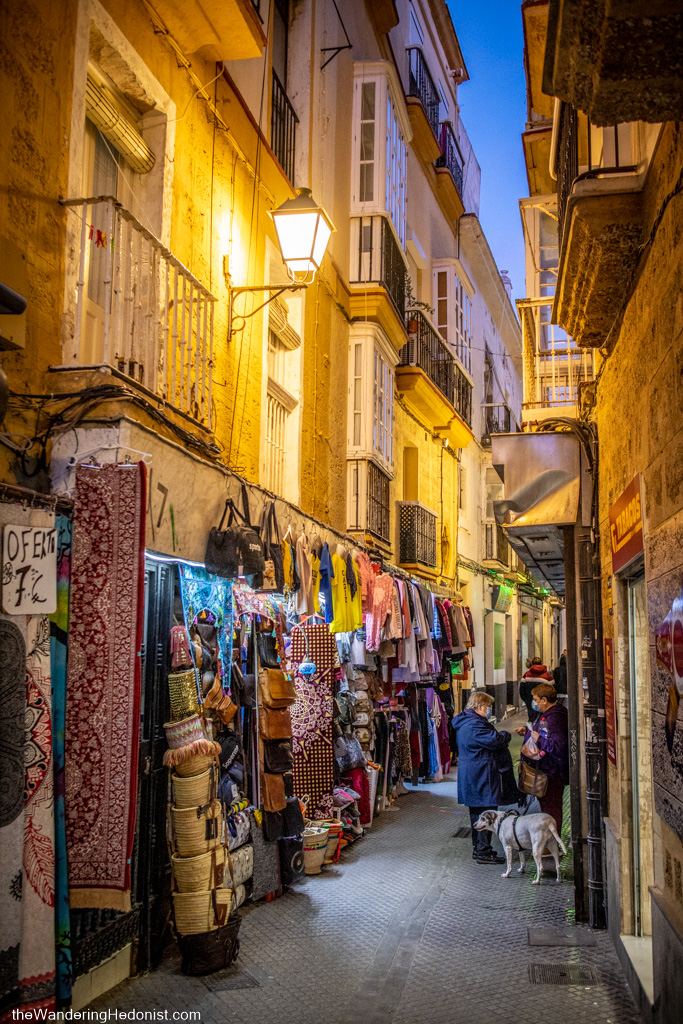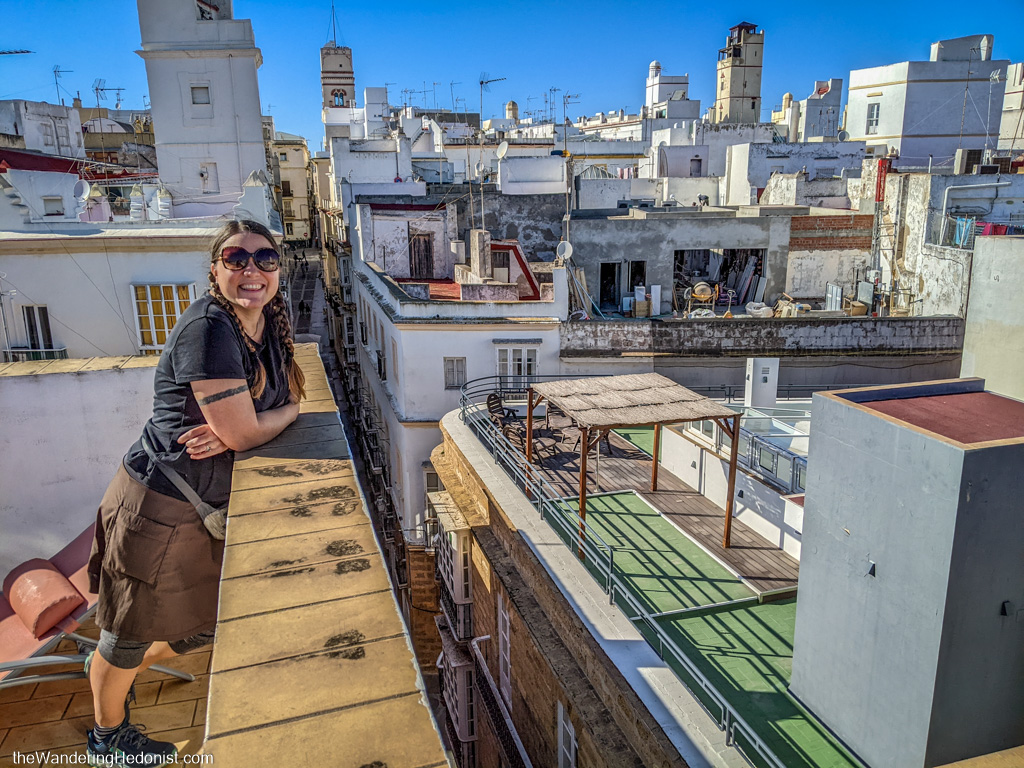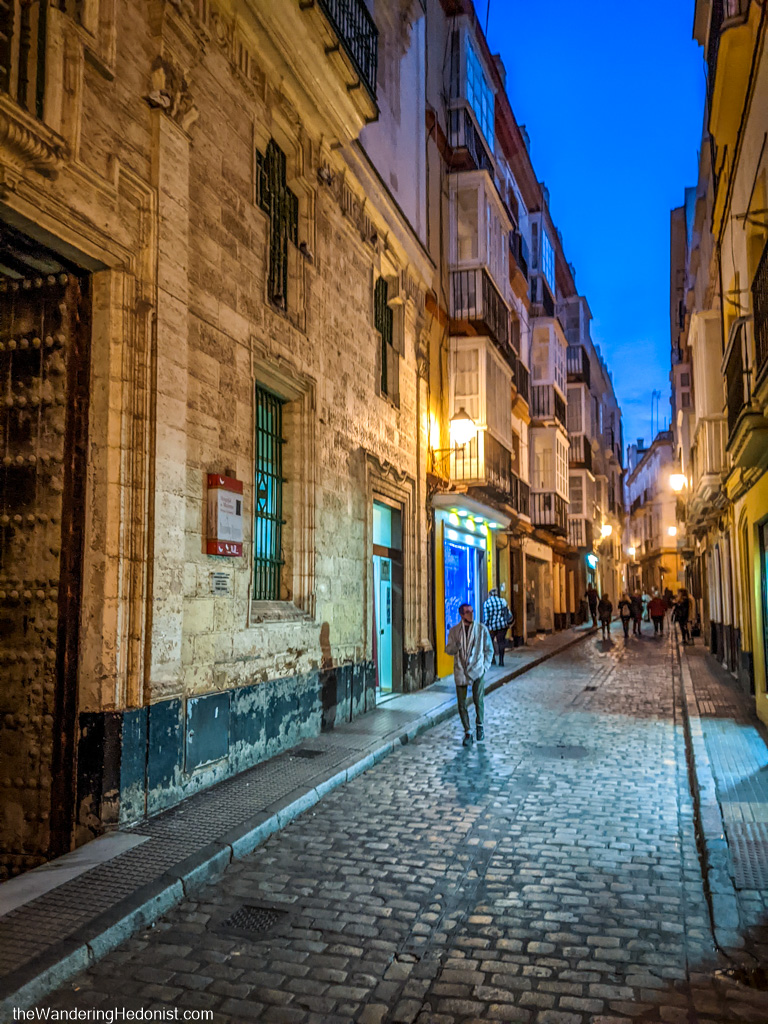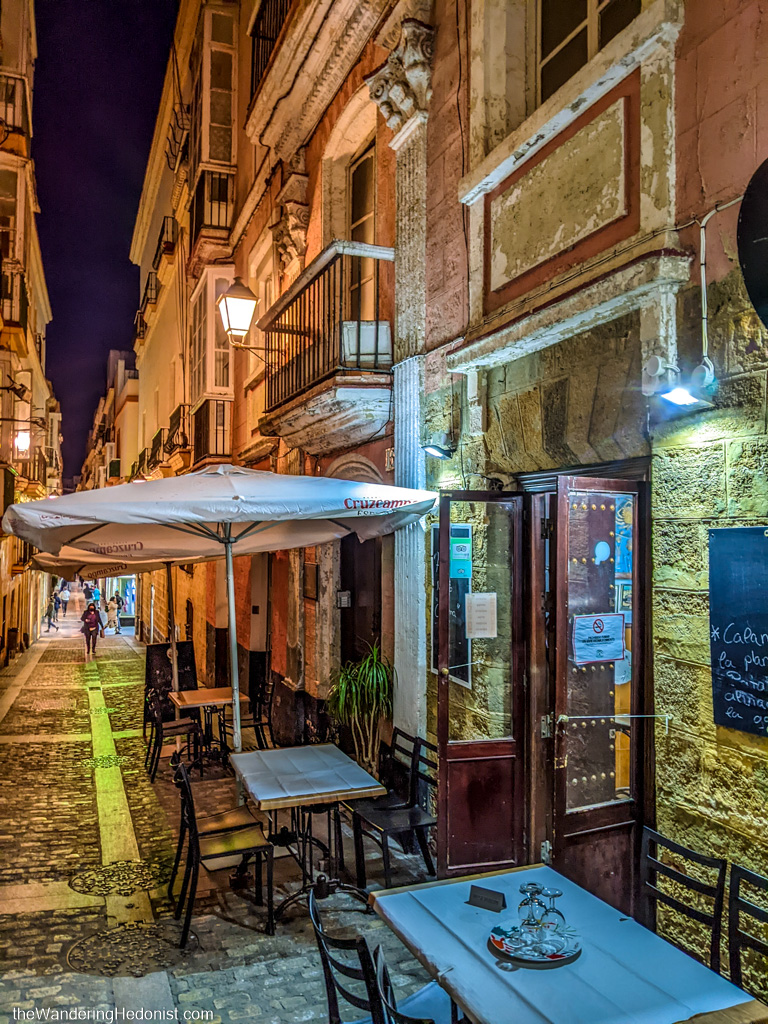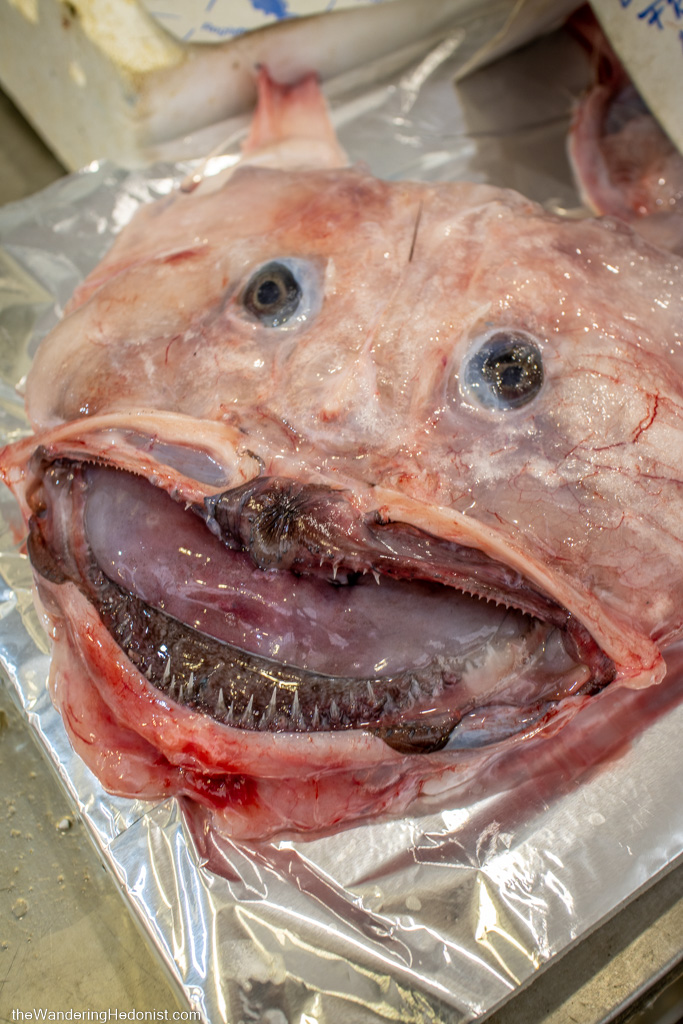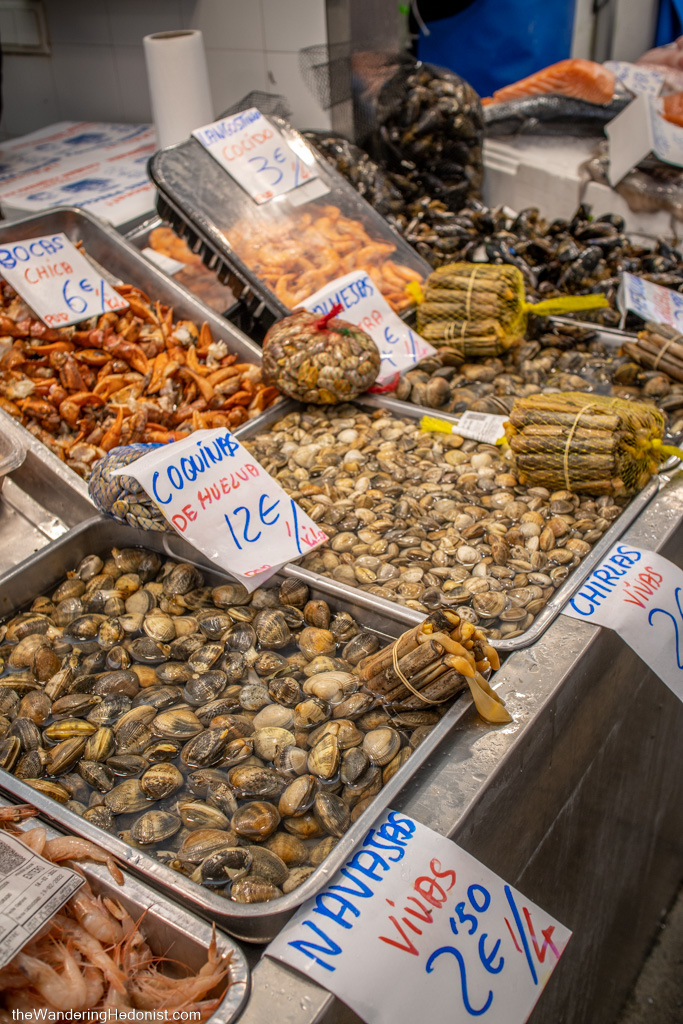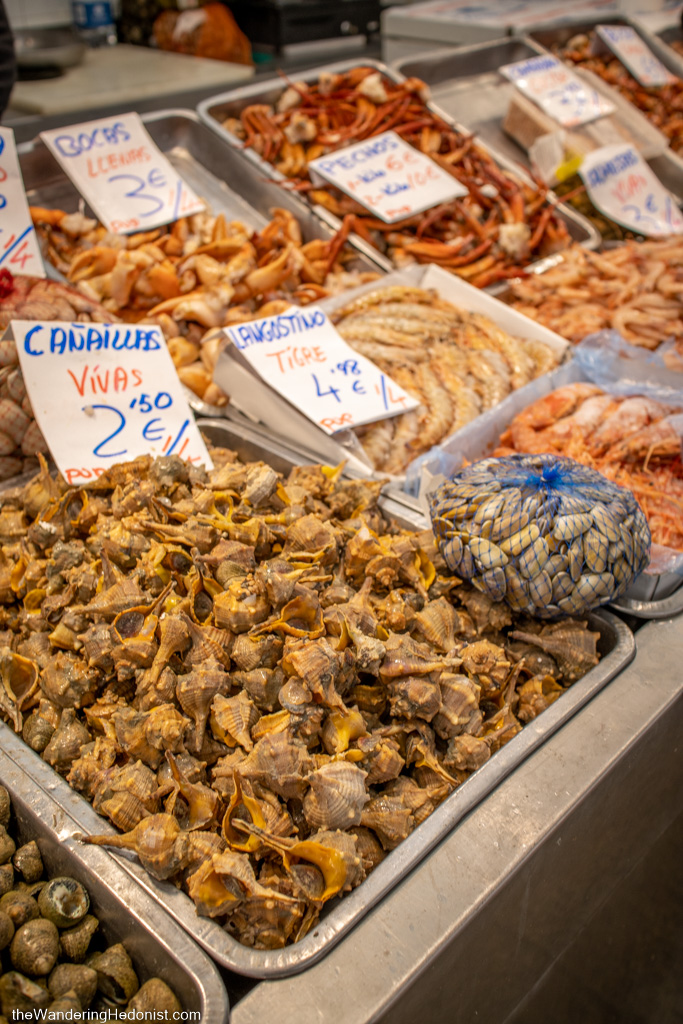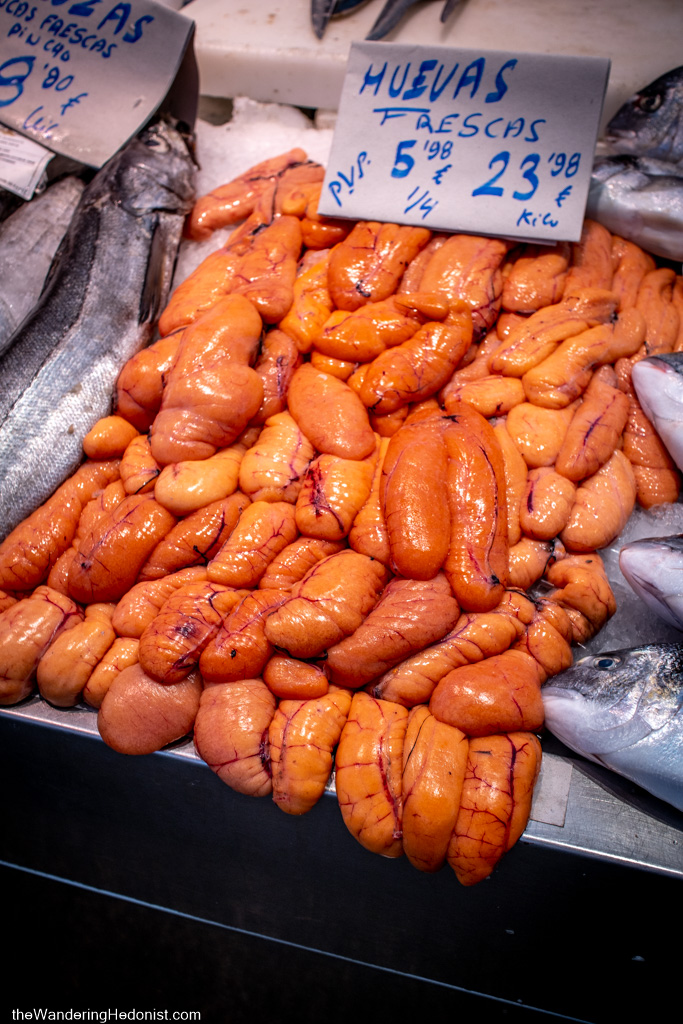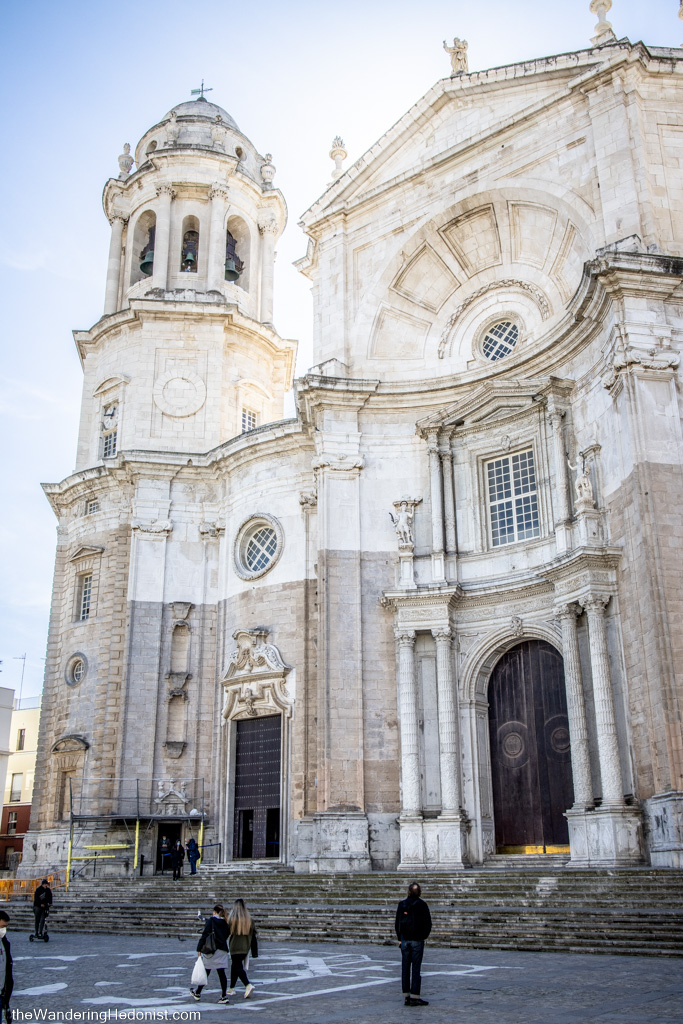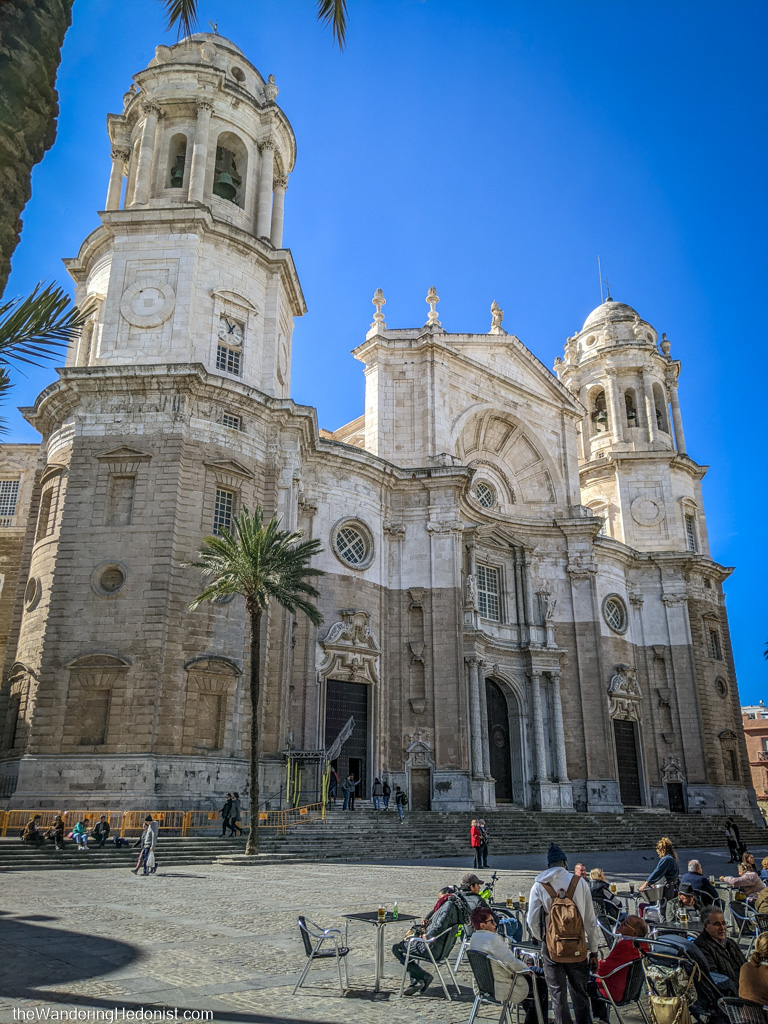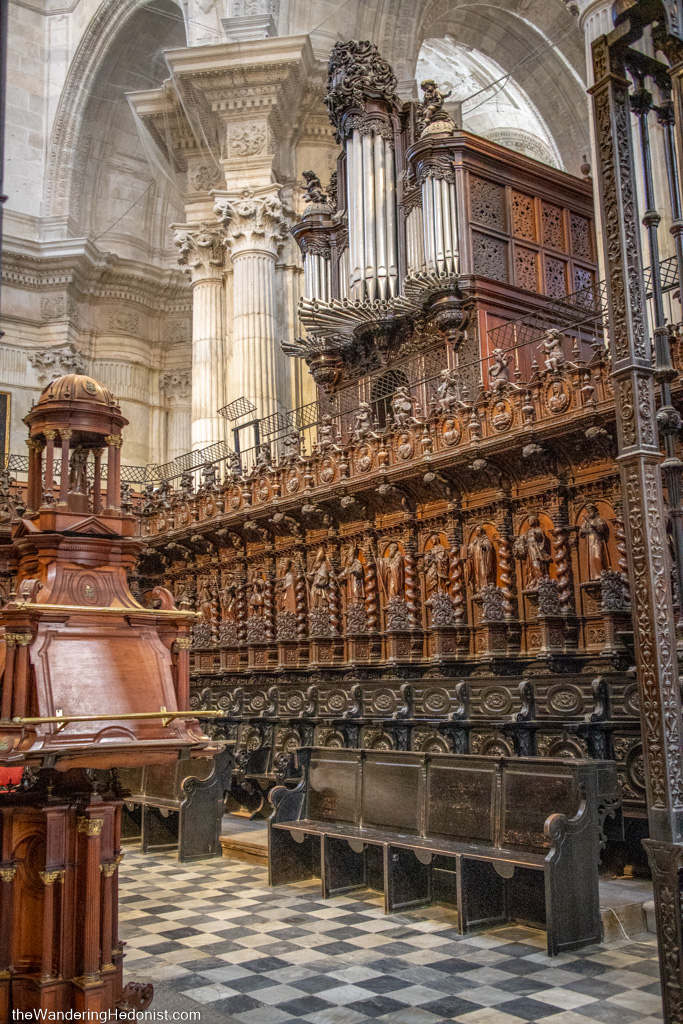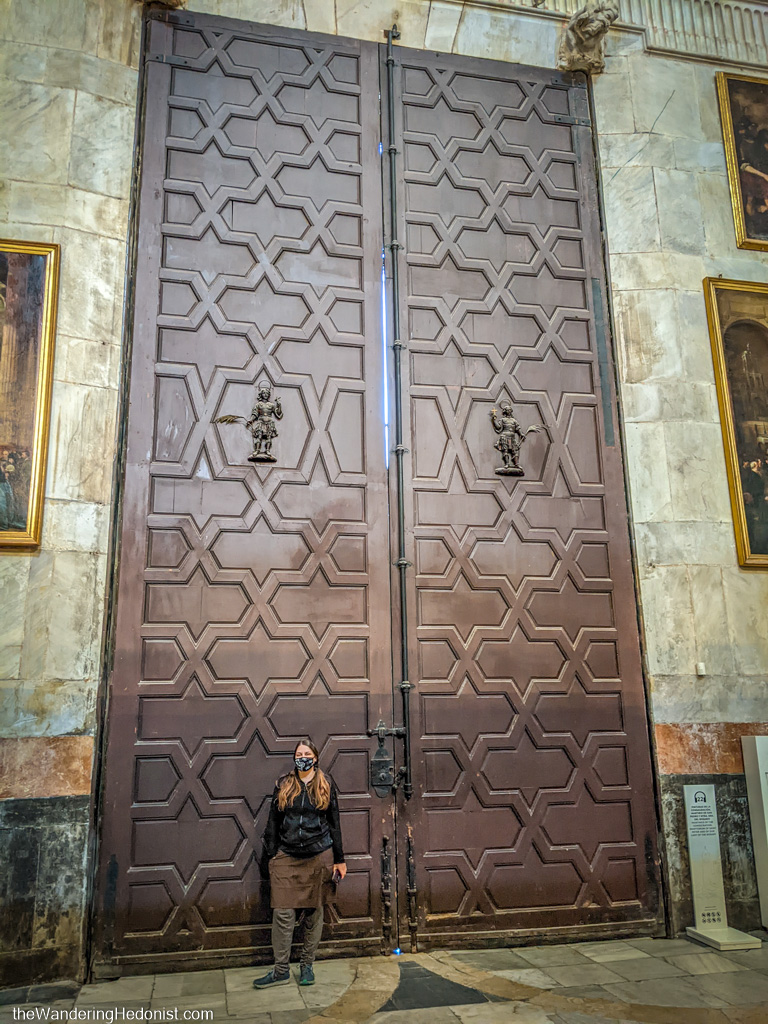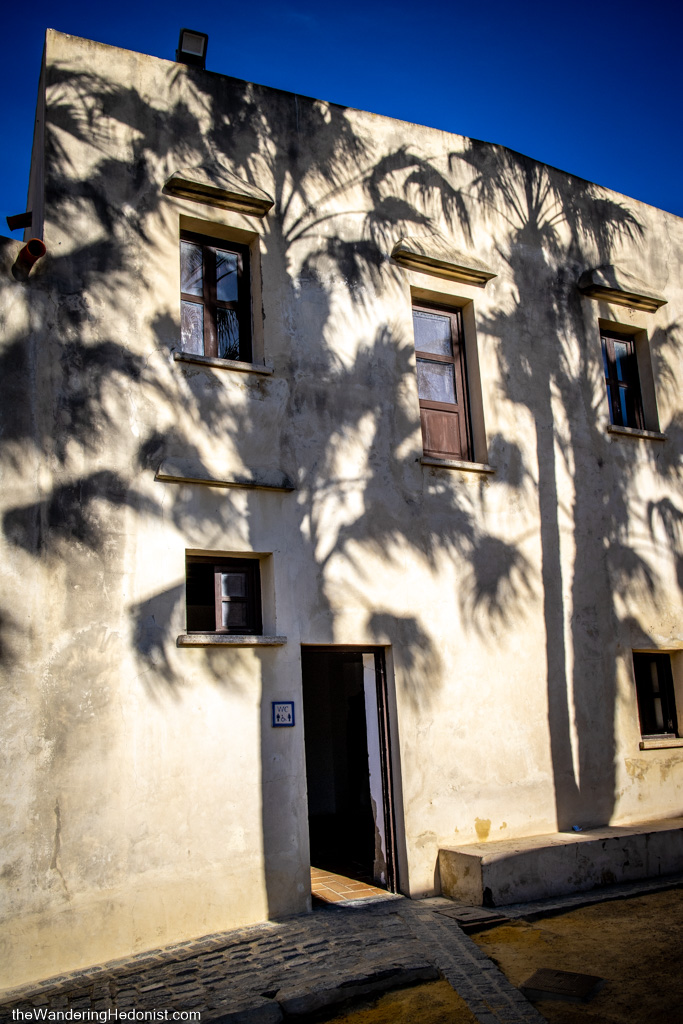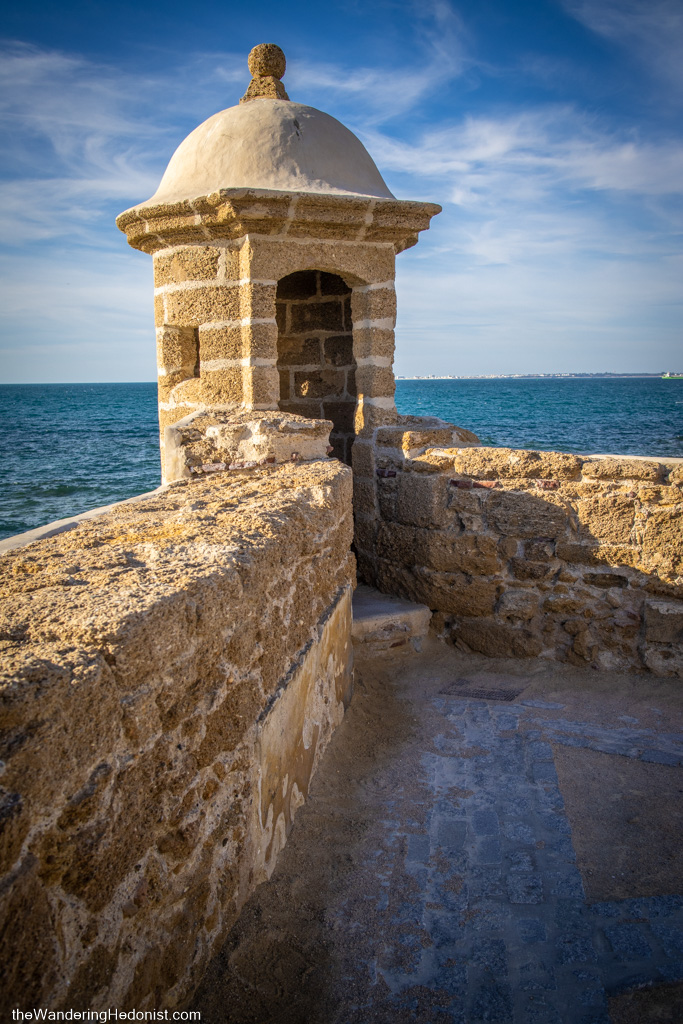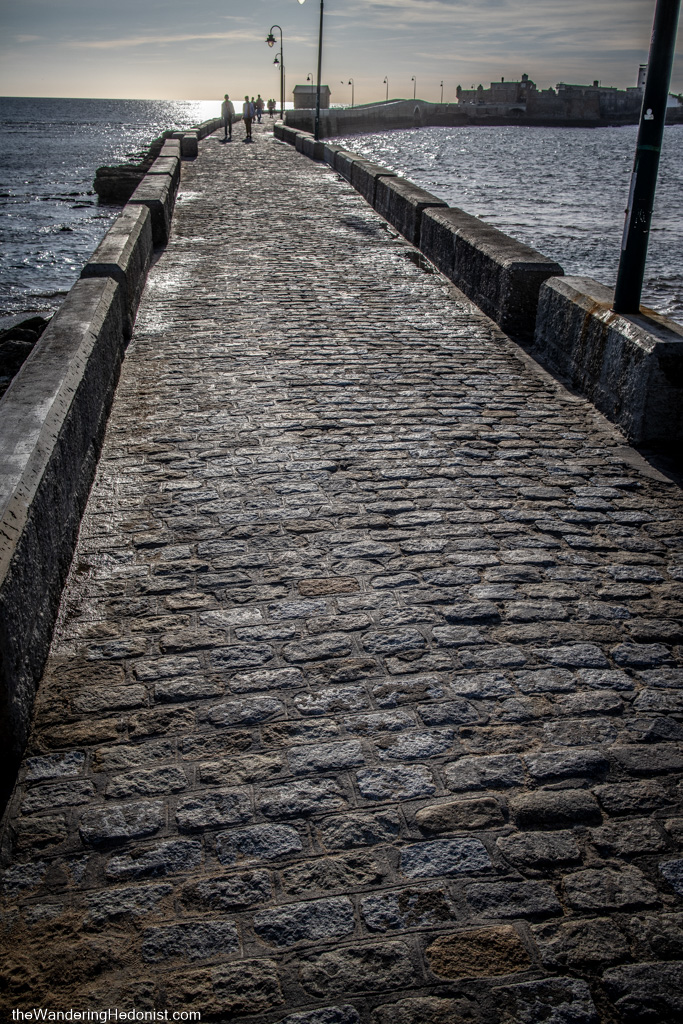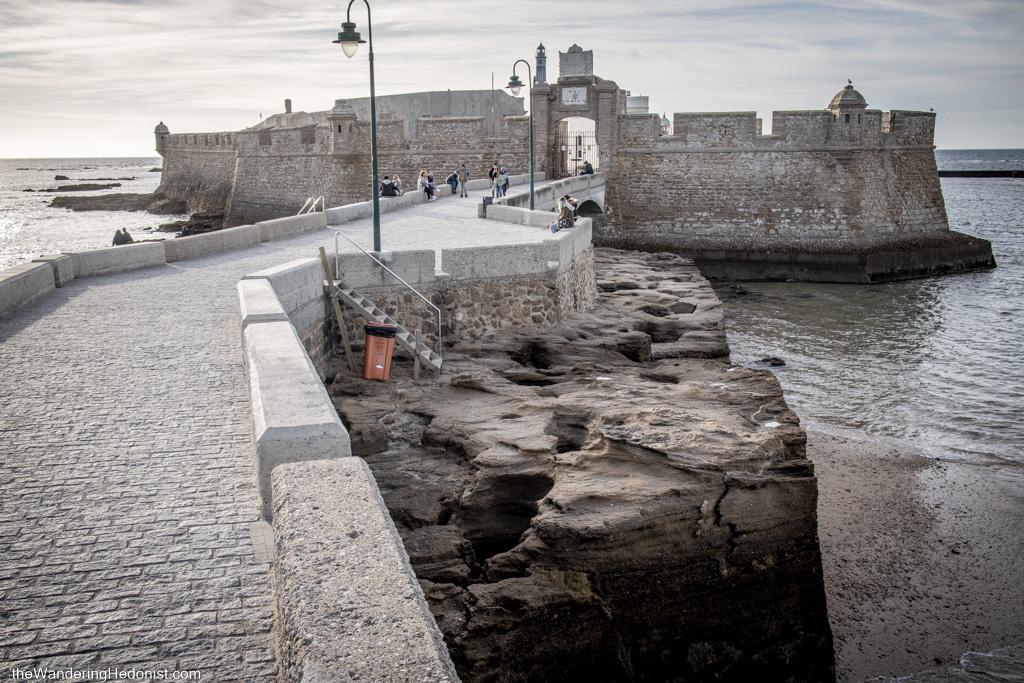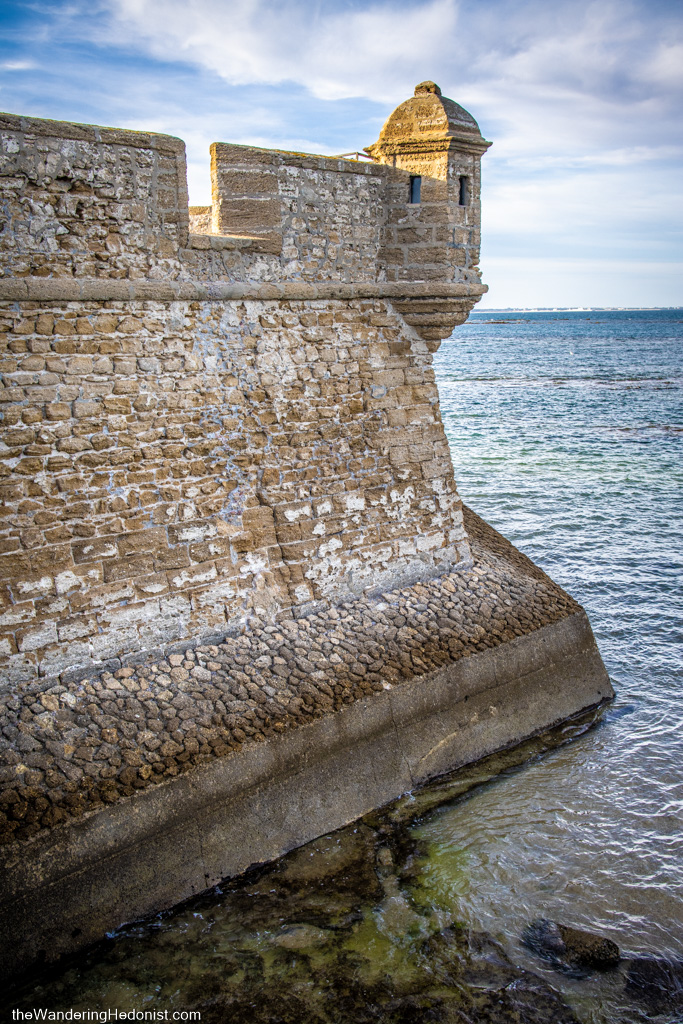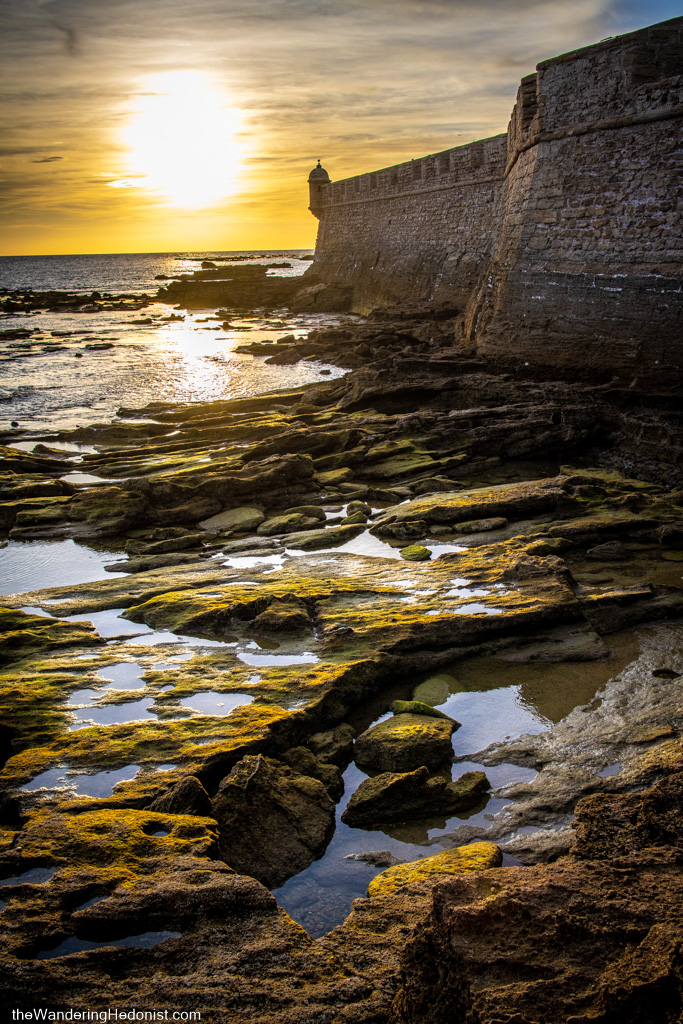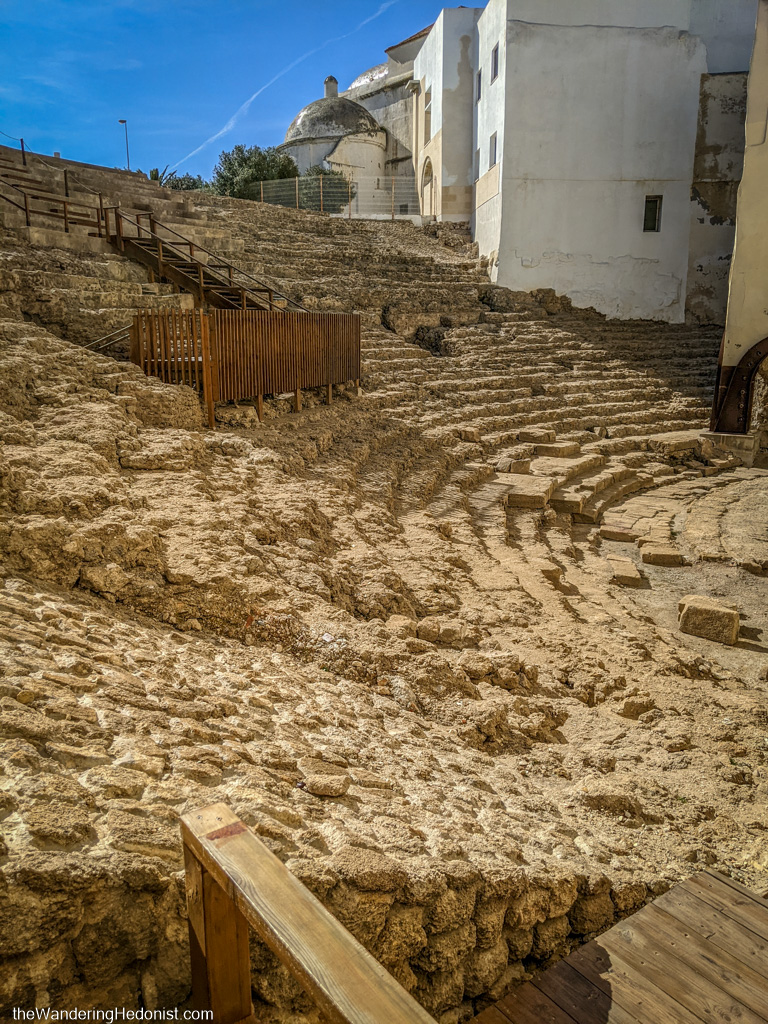Cádiz is a peninsular port city located in the south of Spain and is one of the oldest continuously inhabited cities in western Europe. Founded around 1104 BC by the Phoenicians, this city has a very long history of conquest and reinvention, destruction and rebirth. Columbus sailed from Cádiz on his second and fourth voyages and was the home port of the Spanish treasure fleet from the new world. The narrow grid of pedestrian streets keep things cool and shaded and the many plazas create social spaces in one of the most dense European cities. There’s even the ruins of a Roman amphitheater, the second largest ever built.
Walking around town
Walking around the old town of Cádiz is like exploring an ancient adventure game. You never know what wonder will appear around the corner of the next thin lane. An opulent palm lined square, an ancient church with children playing in front, a massive banyan tree, or the beach speckled with locals enjoying the sun, which is quite common since it is surrounded on all sides with the ocean. Most of the streets in Cádiz are barely wide enough for a car to fit down and is primarily pedestrian but occasionally we would see a vehicle squeezing through, so best to keep an ear out. Also since the city is so space deprived, you’ll find a whole nother world amongst the rooftops of the city; that precious space is not wasted.
Mercado Central Cádiz
Originally a farmer’s market built in the 1890s, the Central Market of Cádiz is the city’s primary fresh market for meat and fish. Built by Torcuato Benjumeda, the space is comprised by a covered central area ringed by classical-style doric columns with a second open ring beyond that with more columns. The seafood on display here was out of this world. Along with shops selling cured meats, cheeses, olives, and prepared food.
Catedral de Cádiz
The construction of the central cathedral of Cádiz started in 1722, replacing the smaller previous cathedral which was unworthy of the crown city, plump with plunder from the new worlds. The cathedral took 116 years to build and sits in the center of a palm lined square now full of tourist restaurants.
Castillo de Santa Catalina
The Castle of Santa Catalina was built by royal decree in 1597 after the Anglo-Dutch assault of 1596. The ministry of defense stopped using the castle in 1991 and it is now used for cultural events. The castle sits at the northern most point of the peninsula and is free to visit.
Castillo de San Sebastián
Originally a small islet, tradition says this was the site of a temple to Moloch/Kronos. It was fortified in 1706 and became a defensive castle for the city. In 1860 a narrow dyke was constructed connecting the mainland to the structure. In 1985 it was declared a site of cultural interest. It was closed while we were there but you are still able to walk out to it and walk around the rocky areas around it. It was a great place to watch the sun set.
Roman amphitheater ruins
Discovered in 1980 after a fire had destroyed some warehouses, this only partially excavated amphitheater is the second largest Roman theater ever built (after the one in Pompeii). Built by order of Lucius Cornelius Balbus (minor) during the 1st century BC, it was abandoned in the 4th century. Then in the 13th century a fortress was built on its ruins by King Alfonso X of Castile. The current structure includes a nice museum with views of the ruins. (Some of the best photo angles are from inside the museum) Then you allowed to enter through an excavated tunnel then up into the seats. The original structure was enormous, much larger than the only partial excavation site.


